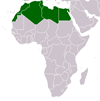The adult worker model family, gender equality and care : The search for new policy principles and possibilities and problems of capabilities approach
The adult worker model family, gender equality and care : The search for new policy principles and possibilities and problems of capabilities approach
There is evidence that policy makers in most Western welfare states are moving away from a set of assumptions about the contributions that men and women make to families based on the notion of a "male breadwinner model family", toward a new set of assumptions, based on an "adult worker model family". The traditional male breadwinner model assumed that men would take primary responsibility for earning and women for caring. It did therefore make provision for care work, albeit at the price of women's economic dependence on men. How care work is to be accommodated in the new model - in which all adults, whether male or female, parents of not, are assumed to enter full-time work - is a major issue. In this paper, Jane Lewis and Susy Giullari begin by examining this shift in policy assumptions at the level of the European Union. Policy makers are increasingly assuming that the work of care will move to the formal, paid sector, in the line with the ore general shift in emphasis from "passive" to "active" welfare and the wish to promote women's labour market participation. But policy makers' assumptions are outrunning the pace of social change in many Western countries; for the most part, women are far from having achieved economic autonomy. The authors go on to argue that there are real limits to the pursuit of a full adult worker model based on the commodification of care. Care work is often passive, involving, for example, the oversight of a child's playtime. Furthermore, there is tittle sign of any reduction in the amount of informal care that is needed, or in the value that women in particular attach to providing it. But this raises difficult issues in respect of gender equality. In particular, it begs consideration of the terms and conditions on which the shift in policy assumptions toward the adult worker model is being made, and especially about the way in which care work is valued and shared. The authors next consider the possibilities offered by the capabilities approach to address these issues. In their view, this offers a promising basis on which to address the issue of care -not least because gender equality is of central concern to both Amartya Sen and Martha Nussbaum, who have played the leading part in developing the approach. The key advantage of using the capabilities approach to address the problem of gender equality in relation to paid work and care is that it provides a universal equality model rooted in the recognition of human diversity. The capabilities approach insists that individuals be in a position to make "real" or genuine choices, which in turn allows a strong case to be made for valuing care, such that it is made practically possible to choose it. In addition, the approach also has the potential to justify policies that promote the sharing of care between men and women. In other words, it is possible to justify state support for care work and to argue that it is impossible to have real freedom to choose care work unless care is given a monetary value. But kind of interdependence that care relationship involve is difficult to deal with in a capabilities framework. Furthermore, unequal power relations between men and women result in a distortion of that independence, such that the choices men make constrain those of women. Gender equality requires that care be shared at the household level, as well as between the collectivity and the individual. Indeed, sharing care work between men and women also increases the possibility of women choosing to engage in some form of political participation. Thus Lewis and Giullari argue that care must be conceptualized as both a"legitimate" choice, which the capabilities approach helps to do, and as a necessary human activity, which in turn provides the basis for arguing that it must be shared between men and women. This is essential if women's freedom to choose is to equal to that of men. However, to "force" men to share care work runs counter to the moral qualities that have been identified as characterizing genuine care.
CITATION: Guillari, Susy. The adult worker model family, gender equality and care : The search for new policy principles and possibilities and problems of capabilities approach . Geneva : UNRISD , 2005. - Available at: https://library.au.int/adult-worker-model-family-gender-equality-and-care-search-new-policy-principles-and-possibilities-3






